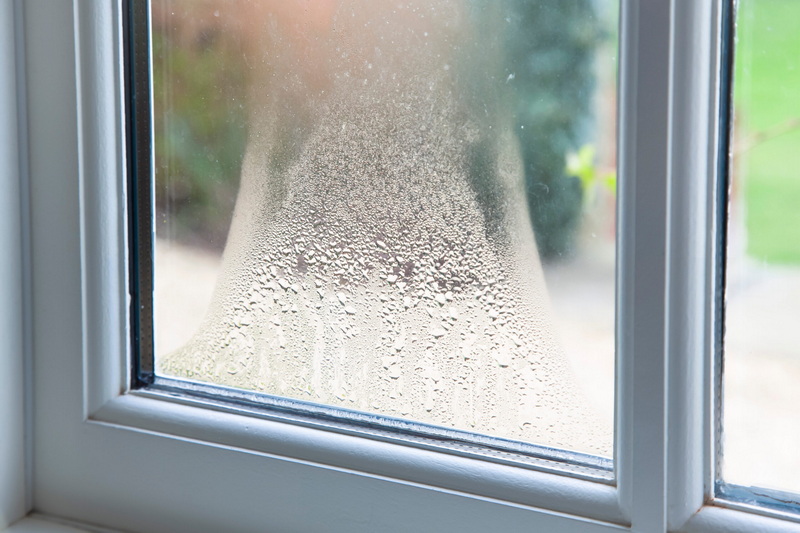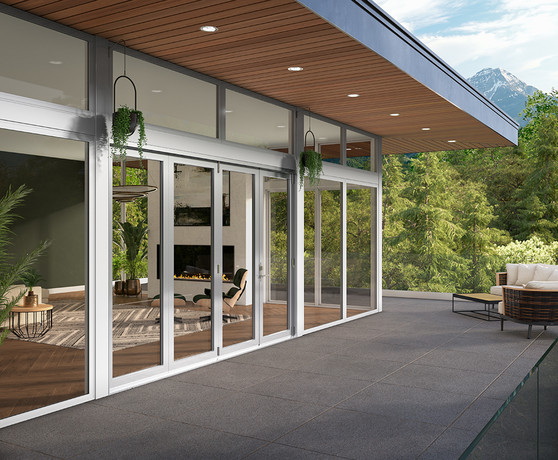English


Views: 222 Author: Dream Publish Time: 2025-01-17 Origin: Site











Content Menu
● Preparation: The Key to Success
>> 1. Tape Off Surrounding Areas
● Demasking and Finishing Touches
>> 2. Clean Up
● FAQ
>> 1. Can I spray paint over existing paint on aluminum windows?
>> 2. How many coats of paint should I apply?
>> 3. What type of primer should I use for aluminum?
>> 4. Is it necessary to remove window screens before painting?
>> 5. How long does it take for spray paint on aluminum windows to dry?
Spray painting aluminum window frames can be a rewarding DIY project that transforms the look of your home without the expense of replacing the windows. This comprehensive guide will take you through the necessary steps, tools, and tips to achieve a professional-looking finish.

Before you start spraying, preparation is crucial. A well-prepared surface ensures better paint adhesion and a smoother finish.
You will need:
- Spray Paint: Choose a high-quality spray paint suitable for metal surfaces.
- Etch Primer: This helps the paint adhere better to the aluminum.
- Sandpaper: Fine grit (around 180-220) for sanding the frames.
- Painter's Tape: To mask off areas you don't want to paint.
- Drop Cloths or Newspapers: To protect surrounding areas from overspray.
- Cleaning Supplies: Warm soapy water, rags, and possibly a degreaser.
- Acetone: For cleaning any oils or residues before painting.
- Safety Gear: Gloves, goggles, and a mask to protect against fumes.
Start by cleaning the aluminum frames thoroughly. Use warm soapy water and a sponge or cloth to remove dirt and grease. For stubborn stains, consider using a degreaser. Rinse with clean water and allow them to dry completely.
Cleaning is essential not only for aesthetics but also for ensuring that the paint adheres properly. Any residue left on the surface can lead to peeling or chipping in the future.
Lightly sand the aluminum frames with fine-grit sandpaper. This step is essential as it roughens the surface, allowing the primer and paint to adhere better. Be sure to wipe away any dust with a damp cloth after sanding.
Sanding also helps to remove any existing paint that may be flaking or peeling, creating a smooth base for your new paint job.
Using painter's tape, carefully mask off any areas you do not want painted, such as glass panes, walls, or any fixtures. Ensure that the tape adheres firmly to prevent paint from bleeding underneath.
For added protection, consider using drop cloths or plastic sheeting to cover larger areas around your windows. This extra step can save you time during cleanup.
Once everything is masked off, apply an etch primer to the frames. This primer is designed for metal surfaces and will help prevent rust while ensuring that your topcoat adheres properly. Spray in thin, even coats from about 20 cm away, allowing each coat to dry according to the manufacturer's instructions before applying another.
Etch primer not only enhances adhesion but also provides a barrier against moisture, which is particularly important for outdoor windows exposed to weather elements.
After the primer has dried completely, it's time to apply your topcoat:
- Shake the spray paint can well before use.
- Hold the can about 20 cm from the surface and spray in even strokes.
- Start at one end of the frame and move steadily across to avoid drips.
- Apply multiple thin coats rather than one thick coat; this helps prevent runs and ensures an even finish.
When applying spray paint, it's best to work in sections rather than trying to cover large areas at once. This approach allows for better control and reduces the risk of overspray.

Once you have achieved your desired color and finish, carefully remove the masking tape while the paint is still slightly tacky. This helps prevent any peeling or lifting of the paint.
If you notice any areas where paint has bled under the tape, use a small brush or a razor blade to clean up those edges once everything has dried.
If there are any paint splatters on the glass or surrounding surfaces, use a razor blade or mineral spirits on a cloth to clean them up carefully.
Proper cleanup not only keeps your workspace tidy but also ensures that your newly painted frames look polished and professional.
Allow your newly painted window frames to cure completely before reattaching any fixtures or using them extensively. This may take up to two weeks depending on environmental conditions.
During this curing period, avoid exposing your painted frames to moisture or extreme temperatures as this can affect adhesion and finish quality.
- Ventilation: Ensure you're working in a well-ventilated area when spray painting, especially indoors. Open windows and use fans if necessary.
- Weather Considerations: Avoid painting on very humid or rainy days as this can affect drying times and finish quality.
- Test First: If you're unsure about how your chosen color will look on your frames, consider testing it on a small hidden area first.
- Use Quality Products: Invest in high-quality spray paints and primers designed specifically for metal surfaces for best results.
- Skipping primer can lead to poor adhesion and peeling paint later on. Always use an etch primer designed for metal surfaces.
- Applying too thick of a coat can cause runs and drips in your paint job. Thin coats are key for a smooth finish.
- Not allowing adequate drying time between coats can result in uneven color and texture.
Once you've completed your painting project, it's important to maintain your aluminum window frames properly:
- Regularly clean them with mild soap and water to remove dirt and grime.
- Inspect for signs of wear or damage periodically; touch up any areas where chipping occurs promptly.
- Consider applying a clear sealant over your painted frames after they have cured fully; this can provide additional protection against UV rays and moisture damage.
Spray painting aluminum window frames can drastically enhance your home's aesthetic appeal while being a cost-effective solution compared to replacement. With careful preparation, attention to detail during painting, and patience during drying times, you can achieve professional-quality results that will last for years.
By following these steps diligently, not only will you improve the appearance of your windows but also extend their lifespan through proper care and maintenance practices post-painting.

Yes, you can spray paint over existing paint as long as it is in good condition. However, it is advisable to sand down any glossy surfaces for better adhesion.
Typically, two to three thin coats of spray paint are recommended for an even finish. Allow each coat to dry before applying the next.
An etch primer specifically designed for metal surfaces is best for aluminum as it promotes adhesion and prevents rust.
While not strictly necessary, removing window screens can make it easier to access all areas of the frame and reduce overspray risk.
Drying times can vary based on environmental conditions but generally expect about 30 minutes between coats; full curing could take up to two weeks.
[1] https://www.homebuilding.co.uk/advice/painting-aluminium-windows
[2] https://www.reddit.com/r/AusRenovation/comments/14fzx9k/how_can_i_paint_these_existing_brown_aluminium/
[3] https://www.youtube.com/watch?v=Y5hp6ieYVf8
[4] https://www.facadeconcepts.com.au/blog/paintingaluminiumwindows
[5] https://windowhardwaredirect.com/en-de/blogs/news/the-ultimate-guide-on-how-to-paint-aluminum-windows-for-a-lasting-finish
[6] https://www.barker-whittle.com.au/blog/diy-deep-dive-series-how-to-paint-aluminium-window-frames
[7] https://www.youtube.com/watch?v=h7tW3pNfeHE
[8] https://www.thepaintshed.com/tips-advice/how-to-paint-aluminium-window-frames
[9] https://www.workshop.bunnings.com.au/t5/Best-Advice/What-is-the-best-way-to-paint-aluminium-windows/ta-p/81622
[10] https://www.youtube.com/watch?v=GRpQlIuJFV0
[11] https://procoverpainting.com.au/aluminium-window-spray-paint-guide/
[12] https://www.facadeconcepts.com.au/blog/paintingaluminiumwindows
[13] https://www.workshop.bunnings.com.au/t5/Whole-of-House/How-do-I-paint-over-metal-window-frames/td-p/176712
[14] https://www.bunnings.com.au/diy-advice/diy-skills/painting/transform-your-aluminium-window-frames
[15] https://www.youtube.com/watch?v=FjrhV9IPTKE
[16] https://www.pinterest.com/pin/our-projects--211247038755677395/
[17] https://www.youtube.com/watch?v=KdanPL9bamg
[18] https://geoexpat.com/forum/341/thread362186.html
[19] https://www.facebook.com/9reno/videos/spray-paint-aluminum-windows-touching-up-in-progress/397958568512943/
[20] https://www.youtube.com/watch?v=d_jPSUsiu3o
[21] https://www.facebook.com/9reno/videos/spray-painting-aluminum-windows-frame/4954184967993516/
[22] https://www.newlinepainting.com.au/how-to-paint-aluminium/
[23] https://pnpcraftsmen.com/electrostatic-spray-painting-of-aluminum-windows-in-new-york-city/
[24] https://www.reddit.com/r/AusRenovation/comments/1571vff/is_painting_aluminum_window_frame_a_bad_idea/
[25] https://www.pinterest.com/ideas/paint-aluminium-window-frames/945221436556/
Seven Requirements for External Doors And Windows of Passive Rooms
How Much Do You Know about The Design Standards for Aluminum Alloy Door And Window Dimensions?
Welding Vs Stainless Steel Fabrication: Understanding The Manufacturing Process Differences
Stainless Steel Fabrication Vs Powder Coated Steel: Durability And Cost Comparison
CNC Machining Vs Stainless Steel Fabrication: Pros And Cons for Industrial Use
Stainless Steel Fabrication Vs Carbon Steel Fabrication: Key Differences Explained
Stainless Steel Fabrication Vs Aluminum Fabrication: Which Is Right for Your Project?
Stainless Steel Grades 201 Vs 304: Cost Vs Performance Breakdown
316L Vs 316 Stainless Steel Grades: Which Is Better for Corrosion Resistance?
Comparing Austenitic Vs Martensitic Stainless Steel Grades: What You Need To Know?
